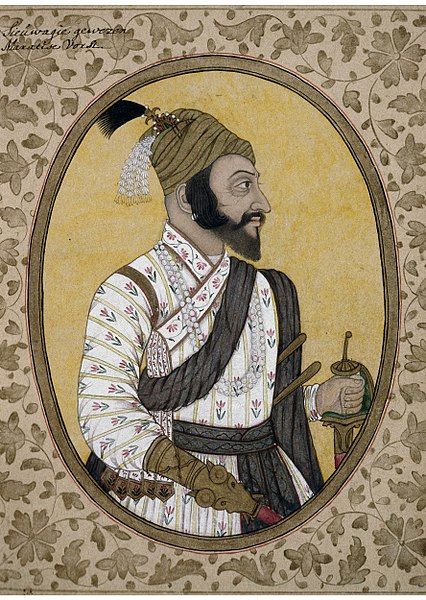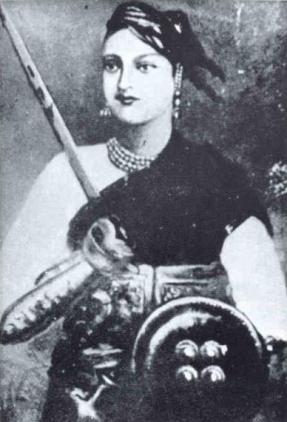Lakshmibai, the Rani of Jhansi (About this soundpronunciation (help·info); 19 November 1828 – 18 June 1858),[1][2] was an Indian queen of the Maratha princely state of Jhansi in North India currently present in Jhansi district in Uttar Pradesh, India.[3] She was one of the leading figures of the Indian Rebellion of 1857 and became a symbol of resistance to the British Raj for Indian nationalists.
Early life
A miniature portrait of Rani Lakshmibai
Rani Lakshmibai was born on 19 November 1828[4][5][6] in the town of Varanasi into a Marathi Karhade Brahmin family.[7] She was named Manikarnika Tambe and was nicknamed Manu.[8] Her father was Moropant Tambe[9] and her mother Bhagirathi Sapre (Bhagirathi Bai). Her parents came from Maharashtra.[10] Her mother died when she was four years old. Her father was the Commander of the war of Kalyanpranth. Her father worked for Peshwa Baji Rao II of Bithoor district.[11] The Peshwa called her "Chhabili", which means "playful". She was educated at home, able to read and write, and was more independent in her childhood than others of her age; her studies included shooting, horsemanship, fencing[12][13] and mallakhamba with her childhood friends Nana Sahib and Tatya Tope.[14][15][dubious – discuss] Rani Lakshmibai contrasted many of the patriarchal cultural expectations for women in India's society at this time.[16]
Rani Lakshmibai was accustomed to riding on horseback accompanied by escorts between the palace and the temple, although sometimes she was carried in a palanquin.[17] Her horses included Sarangi, Pavan and Baadal; according to historians she rode Baadal when escaping from the fort in 1858. Her palace, the Rani Mahal, has now been converted into a museum. It houses a collection of archaeological remains of the period between the 9th and 12th centuries AD.






0 Comments